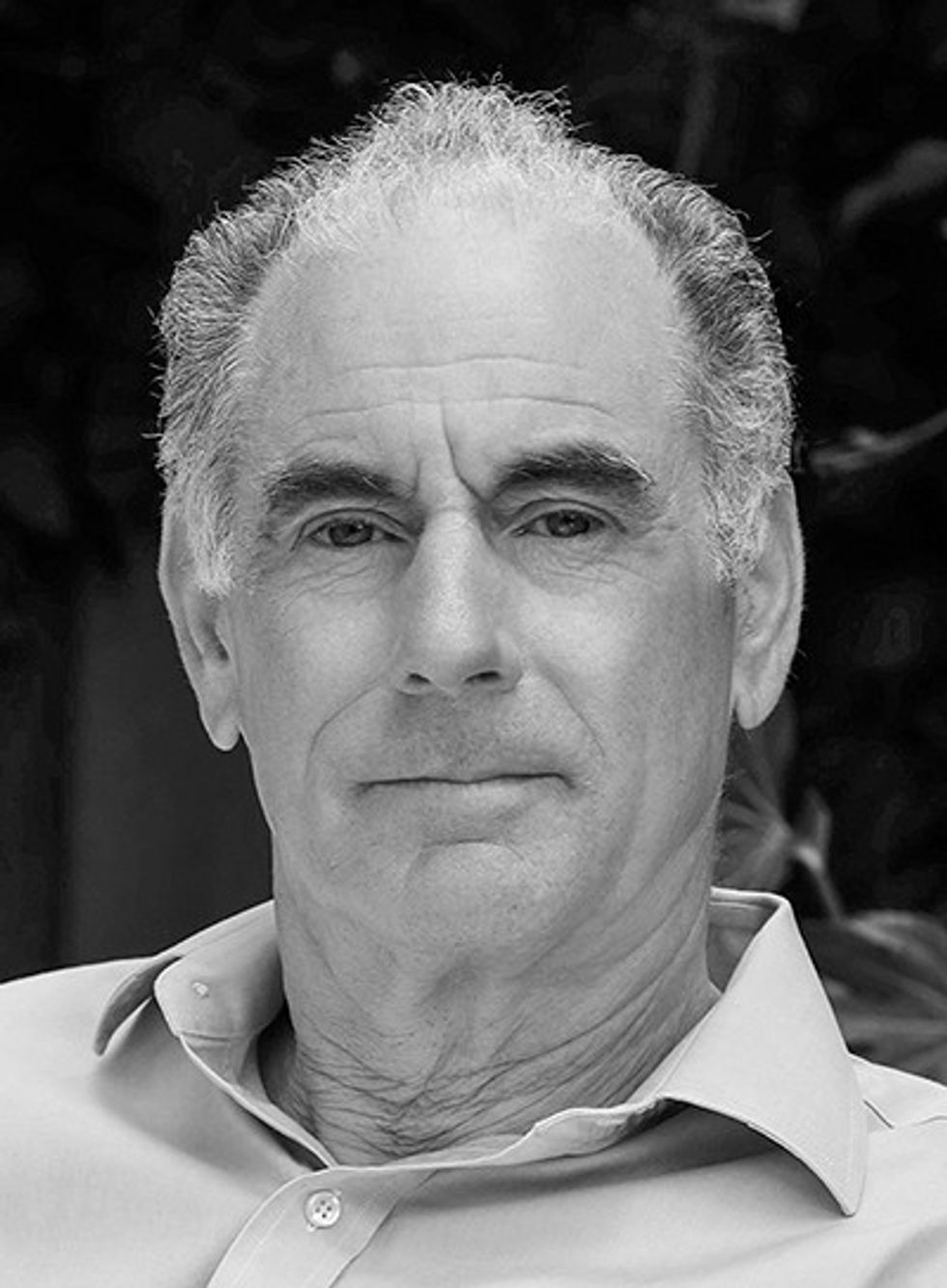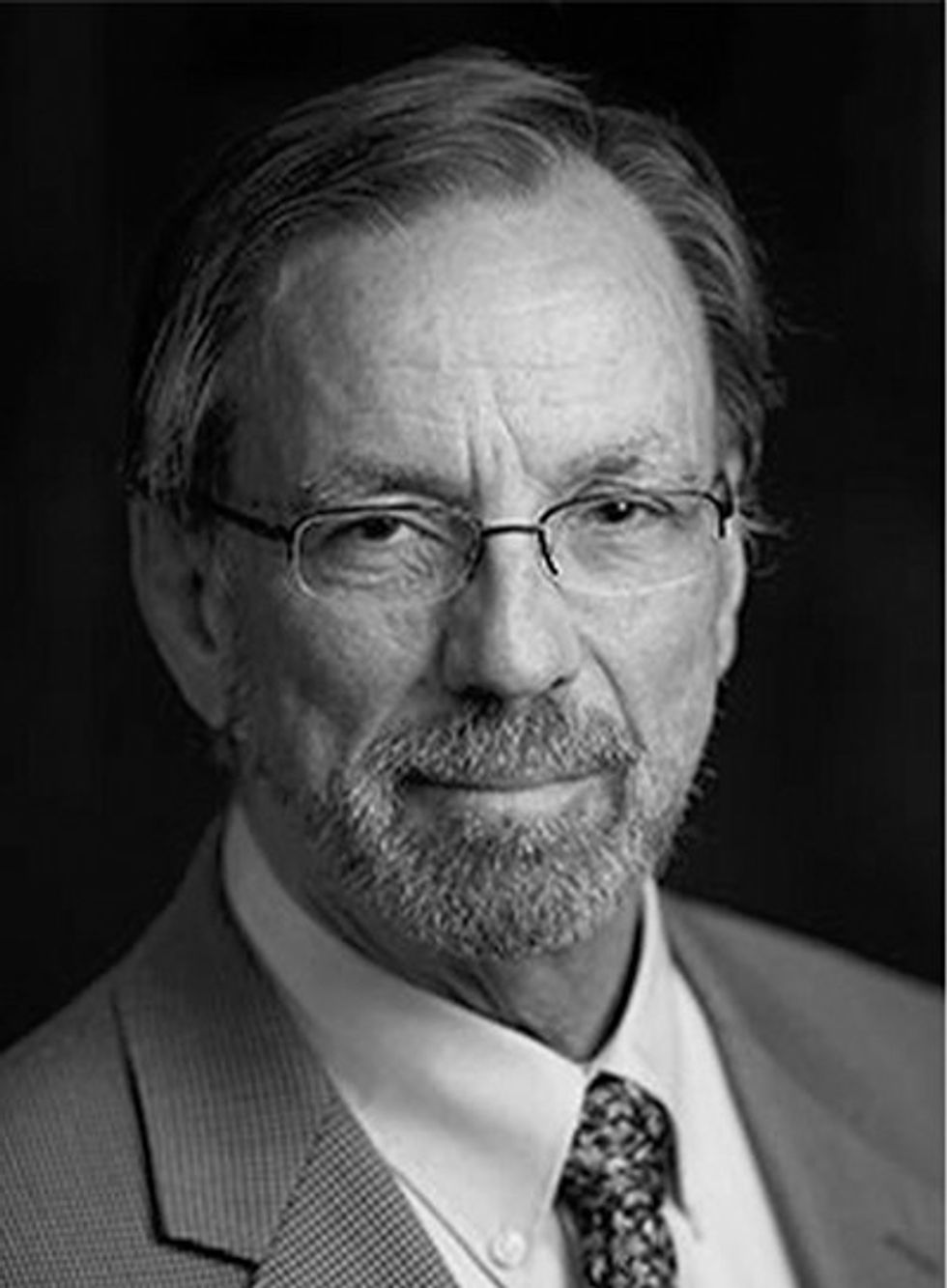Wake boats — nothing like ski boats
Guest Commentary by B. Blake Levitt
Guest Commentary by B. Blake Levitt
Recreating humans have come up with a new way to thrill ourselves at the expense of water environments by creating artificial waves high enough for surfing behind a boat on inland watercourses (in addition to oceans) without being attached to a tow rope, unlike traditional water skiing. Sounds innocuous, right? It’s not.
The Lakeville Journal has done a yeoman’s job covering the subject of wake boating on Lake Waramaug, which borders the towns of Kent, Washington, and Warren but “recreational wakes” concern all inland watercourses too, especially in the NorthwestCorner where we have a unique strain of hydrilla infestations that permanently endanger the health of all inland lakes and rivers.
Wake boats are a direct conduit for invasives because their fundamental architecture is unlike anything seen in sports boating before. Wake boats employ internal ballast systems and wake-forming attachments like wake plates and wedges to shape waves that are typically 3-4 feet high. The ballasts are designed to take up water and weigh down the boat’s stern much deeper into the water than a ski boat, while raising the bow far above the water line, making it difficult to see other boats/swimmers ahead. Ballasts can retain up to 23 gallons of water inside the ballasts and bilge even after being drained with electric pumps. Because ballasts are internal systems, no physical inspections are possible and sanitation must be extremely thorough using water with temperatures above 140 F. (This alone will require new inspection infrastructure at every lake since the transport of contaminated water has already been known to spread Eurasian watermilfoil, spiny water flea, and zebra mussels between waterbodies. And invasives are just one concern.
Traditional water skiing boats skim the water’s surface, create relatively superficial waves with little energy and do not destroy fragile lake ecosystems. But wake boats — new on the scene since 2010 — are specifically designed to displace huge amounts of water and sales have recently surged. As usual, the technology is in the field far in advance of our understanding its potential consequences.
Over 300 lakes in the country have banned or limited wake surfing; Wisconsin is in the process of passing statewide ordinances as is Vermont — all based on environmental concerns.
In a detailed report entitled “The Effects of Wake Boats on Lake Ecosystem Health: A Literature Review” by the environmental group “Wisconsin’s Green Fire, Voices for Conservation” in 2024, they note serious environmental damage from wake boating besides invasives:
Wake boats produce wakes that are 2–3 times larger than motorized non-wake boats and transfer up to 12 times more power to shorelines, requiring more than 600 feet to dissipate.
Armoring shorelines with riprap to repair/reduce erosion has high environmental/financial costs, reducing biodiversity/habitat quality, exacerbating invasive issues, and increasing nutrient runoff into lakes.
Recreational wakes, propeller turbulence, and direct damage from deep hulls and propellers can disturb/destroy aquatic plant communities, worsening erosion and habitat loss.
Native aquatic plants help secure shorelines and lake bottoms and are essential cornerstones of food webs and fish reproduction.
Enhanced wakes, noise levels, and turbulence can negatively impact wildlife, including near-shore nesting birds and fish.
Wake boats can resuspend lake sediments at deeper depths than other watercraft, reducing water quality and clarity. The resuspension of lake sediment can also reintroduce stored and previously inaccessible phosphorus back into the water column, fueling algal growth. The latter is of particular concern to Lake Waramaug, which was the country’s first whole-lake, non-chemical field experiment in algal remediation, partly funded by the U.S. EPA. In 1975, a group of concerned citizens formed the Lake Waramaug Task Force — now the Lake Waramaug Conservancy —to address the pea-soup-like conditions of the lake’s water quality caused by intense algae blooms from phosphorus/nutrient accumulation in lake sediment from nearby dairy farms, old septic systems, and general lawn/upland run-off.
Over the last 50 years, via innovative limnology designs, education, in-lake zooplankton farms (zooplankton eats algae), precise year-to-year monitoring/reporting and many millions of dollars from a supportive community, the group was able to steadily increase water clarity from zero in 1968 when the lake was in a state of quickening eutrophication to depths of 19 feet by 2019. However, since 2020 that success has backtracked somewhat and coincides with the increase in wake boats (estimated to be 40+ now). But since (in science parlance) ‘correlation does not equal causation,’ a detailed study was commissioned by the Interlocal Commission via the LW Task Force and funded by the three towns. Terra Vigilis Environmental Services, a nationally recognized science/engineering group with a focus on protecting infrastructure and environmental ecosystems, was commissioned. Their work took months to complete and included in-depth analysis during several seasons at numerous locations, supported by underwater and aerial drone technology. They created two highly detailed/critical analysis reports for the community that can be seen at www.lakewaramaug.org. The reports are decisive studies in underwater sediment disturbance as deep as 26 feet from the wake boat they employed in “normal use” conditions.
If ever there was a lake with scientific documentation to eschew wake surfing, Lake Waramaug — too small, narrow, shallow, and studied — is it. In the recent information meetings at town halls in the three towns, lakeside residents have reported significant shoreline erosion (repaired at private expense), plus damage to docks and moored boats. People report not sitting on their own docks on weekends due to waves rocking and crashing over them. There was one report of a child being slammed into shoreline rocks and numerous reports of capsized kayakers. (For perspective, Lake Tahoe, at 120,000 acres, has a 600 feet buffer for wake boats versus Lake Waramaug’s 640 acres with an unenforced voluntary 200 feet buffer for all boats.)
Referendums are scheduled in the three towns on July 31 to vote on a proposed ordinance put forth by The Lake Waramaug Authority and endorsed by numerous environmental groups, including the Protect Lake Waramaug Coalition. (Check town websites for times and to read the ordinance.) It’s a common sense proposal that bans wake surfing, not boats. It’s been reviewed, edited, and approved by the CT Department of Energy and Environmental Protection (DEEP), which has general jurisdiction over watercourses but partners with municipalities in which they are located.
Polluting for pleasure by a handful of wealthy residents, especially regarding dangerous whole-lake algae blooms, cannot be allowed to undo what the Lake Waramaug community has spent five decades to fix. Time for all voters to show up and protect the Commonweal. This is coming to a lake near you soon.
B. Blake Levitt is a science journalist who writes about how technology impacts biology. She is the Communications Director for The Berkshire-Litchfield Environmental Council and lives in Warren.
SHARON — Sharon Dennis Rosen, 83, died on Aug. 8, 2025, in New York City.
Born and raised in Sharon, Connecticut, she grew up on her parents’ farm and attended Sharon Center School and Housatonic Valley Regional High School. She went on to study at Skidmore College before moving to New York City, where she married Dr. Harvey Rosen and together they raised two children.
Sharon’s lifelong love of learning and the arts shaped both her work and her passions. For decades, she served as a tour guide at the American Museum of Natural History and the Asia Society, sharing her knowledge and enthusiasm with countless visitors. She also delighted in traveling widely, immersing herself in other cultures, and especially treasured time spent visiting her daughter and grandsons in Europe and Africa.
She was also deeply connected to her hometown, where in retirement she spent half her time and had many friends. She served as President of the Sharon East Side Cemetery until the time of her death, where generations of her family are buried and where she will also be laid to rest.
She is survived by her husband, Harvey; her children, Jennifer and Marc; and four beloved grandchildren.
Claire and Garland Jeffreys in the film “The King of In Between.”
There is a scene in “The King of In Between,” a documentary about musician Garland Jeffreys, that shows his name as the answer to a question on the TV show “Jeopardy!”
“This moment was the film in a nutshell,” said Claire Jeffreys, the film’s producer and director, and Garland’s wife of 40 years. “Nobody knows the answer,” she continued. “So, you’re cool enough to be a Jeopardy question, but you’re still obscure enough that not one of the contestants even had a glimmer of the answer.”
Garland Jeffreys never quite became a household name, but he carved out a singular place in American music by refusing to fit neatly into any category. A biracial New Yorker blending rock, reggae, soul and R&B, he used genre fusion as a kind of rebellion — against industry pigeonholes, racial boundaries and the musical status quo. Albums like “Ghost Writer” (1977) captured the tension of a post–civil rights America, while songs like “Wild in the Streets” made him an underground prophet of urban unrest. He moved alongside artists like Lou Reed and Bruce Springsteen but always in his own lane — part poet, part agitator, part bridge between cultures.
“I think what I tried to do with the film, wittingly or unwittingly, was just to show that we all have these lives and they don’t often meet our dreams of what we think we’re entitled to, we’re talented enough to get or whatever,” said Claire. “We all have these goals, but we’re sort of stymied. Often, it’s partly circumstance and luck, but it’s also very often something that we’re doing or not doing that’s impeding us.”
This is not the typical rock-and-roll redemption story. There are no smashed guitars, no heroic overdoses, no dramatic comeback tour. What we get instead is something quieter and more intimate: hours of archival footage that Claire spent years sorting through. The sheer effort behind the film is palpable — so much so that, as she admitted with a laugh, it cured her of any future ambitions in filmmaking.
“What I learned with this project was A, I’m never doing it again. It was just so hard. And B, you know, you can do anything if you collaborate with people that know what they’re doing.”
Claire worked with the editing team of Evan M. Johnson and Ben Sozanski and a slew of talented producers, and ended up with a truthful portrayal — a beautiful living document for Garland’s legions of fans and, perhaps most importantly, for the couple’s daughter, Savannah.
“She’s been in the audience with me maybe three or four times,” said Claire. “The last time, I could tell that she was beginning to feel very proud of the effort that went into it and also of being a part of it.”
Savannah pursued a career in music for a while herself but has changed tracks and become a video producer.
“I think she couldn’t quite see music happening for herself,” said Claire. “She was like, ‘I don’t know if I want to struggle the way I saw my dad struggling and I’m going to get a job with a salary.’”
The film doesn’t just track the arc of an underappreciated musician, however. The music, always playing, is the soundtrack of a life — of a man navigating racial, musical and personal boundaries while balancing marriage, parenthood, aging, addiction andrecovery. Garland and Claire speak plainly about getting sober in the film, a life choice that gave them both clarity and shows Claire as a co-conspirator in his survival.
“I did some work early on with a director,” said Claire. “He wanted the final cut, and I didn’t feel like I could do that — not because I wanted so much to control the story, but I didn’t want the story to be about Alzheimer’s.”
Diagnosed in 2017, Garland, now 81, is in the late stages of the disease. Claire serves as his primary caregiver. The film quietly acknowledges his diagnosis, but it doesn’t dwell — a restraint that feels intentional. Garland spent a career refusing to be reduced: not to one sound, one race or one scene. And so the documentary grants him that same dignity in aging. His memory may be slipping, but the film resists easy sentimentality. Instead, it shows what remains — his humor, his voice, his marriage, the echo of a life lived on the edges of fame and at the center of his own convictions.
The Moviehouse in Millerton will be screening “The King of In Between” on Sept. 20 at 7 p.m. Peter Aaron, arts editor of Chronogram Magazine will conduct a talkback and Q&A with Claire Jeffreys after the film. Purchase tickets at themoviehouse.net.
The Haystack Book Festival, a program of the Norfolk Hub, brings renowned writers and thinkers to Norfolk for conversation. Celebrating its fifth season this fall, the festival will gather 18 writers for discussions at the Norfolk Library on Sept. 20 and Oct. 3 through 5.

For example, “Never Take the Rule of Law for Granted: China and the Dissident,” will be held Saturday, Sept. 20, at 4 p.m. at the Norfolk Library. It brings together Jerome A. Cohen, author of “Eastward, Westward: A Life in Law,” and Mark Clifford, author of “The Troublemaker: How Jimmy Lai Became a Billionaire, Hong King’s Greatest Dissident, and China’s Most Feared Critic” in dialogue with journalist Richard Hornik to discuss the rule of law and China.
The Council on Foreign Relations stated, “Few Americans have done more than Jerome A. Cohen to advance the rule of law in East Asia. He established the study of Chinese law in the United States. An advocate for human rights, Cohen has been a scholar, teacher, lawyer, and activist for sixty years.”
Cohen, a professor at New York University School of Law and director of its U.S.-Asia Law Institute, revealed his long view on China: “We are now witnessing another extreme in the pendulum’s swing toward repression. Xi Jinping is likely to outlive me but ‘no life lives forever.’ There will eventually be another profound reaction to the current totalitarian era.”

In “The Troublemaker,” Clifford chronicles Lai’s life from child refugee to pro-democracy billionaire to his current imprisonment by the Chinese Communist Party. Clifford is president of the Committee for Freedom in Hong Kong Foundation, a Walter Bagehot Fellow at Columbia University, and holds a PhD in history from the University of Hong Kong. He was the former editor-in-chief of the South China Morning Post and The Standard (Hong Kong and Seoul).

Richard Hornik, adjunct senior fellow at the East-West Center, will moderate the discussion. Hornik is the former executive editor of AsiaWeek, news service director of Time magazine, and former Time bureau chief in Warsaw, Boston, Beijing and Hong Kong.

The Brendan Gill Lecture is a highlight of the festival honoring longtime Norfolk resident Brendan Gill, who died in1997. Gill wrote for The New Yorker magazine for fifty years. Betsy Lerner, New York Times-recognized author of “Shred Sisters,” will deliver this year’s lecture on Friday, Oct. 3, at 6 p.m. at the Norfolk Library.
Visit haystackbookfestival.org to register. Admission is free.